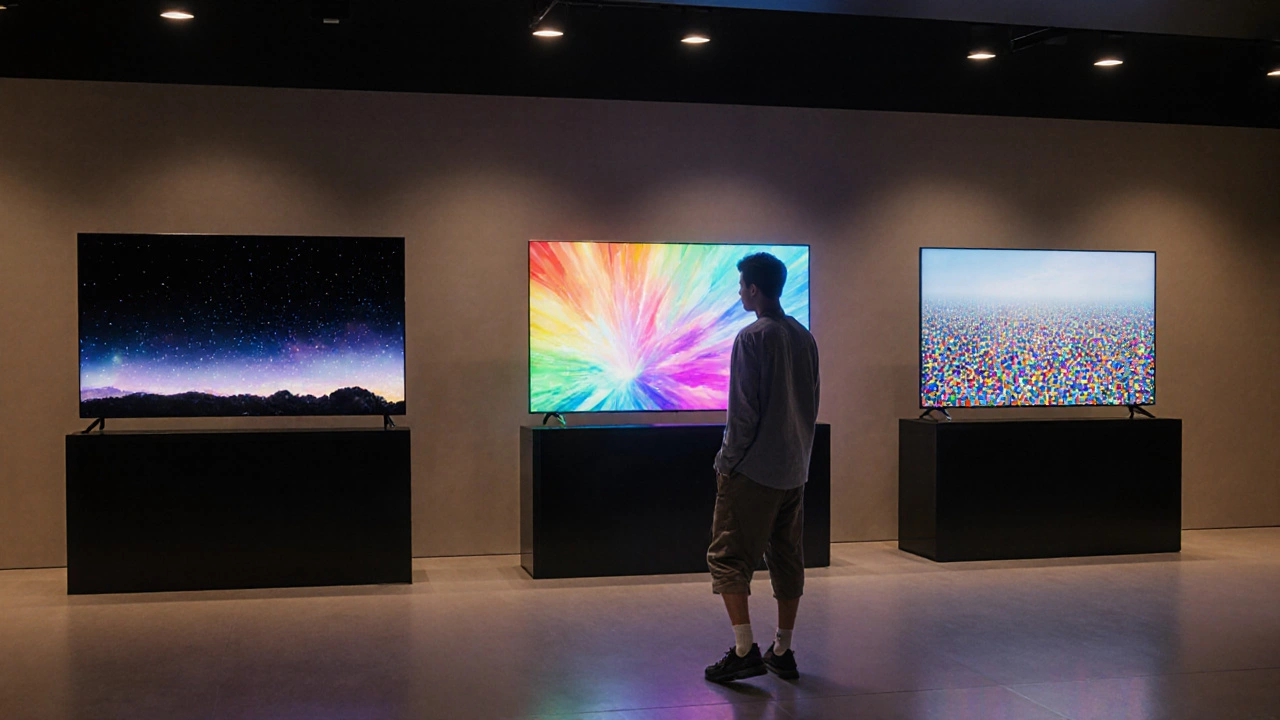When you start checking out QLED disadvantages, the drawbacks of QLED TV technology such as lower contrast, blooming and higher cost. Also called QLED drawbacks, these factors shape buying decisions for anyone hunting a new television.
The most common complaint comes from the way QLED handles black levels. Because QLED relies on a backlight, it can’t turn off pixels completely, so dark scenes often look gray instead of true black. This is a classic case where Quantum dot technology, the core of QLED that boosts colour brightness creates a trade‑off: you get vivid, bright colours, but you lose the deep blacks that OLED delivers. In fact, QLED disadvantages also include the "halo" effect, where bright objects bleed into surrounding dark areas, a phenomenon known as blooming. For gamers and movie buffs who love high‑contrast cinema, this can be a real annoyance.
Another entity to compare is OLED, a self‑emissive display technology that can turn each pixel off for perfect blacks. OLED offers better contrast ratios and thinner panels, but it can suffer from burn‑in if static images stay on for too long. QLED avoids burn‑in, which is why some buyers pick it for bright‑room use. However, the price gap remains wide: QLED models often sit at the high‑end of the market, pushing the overall cost of a home theatre setup.
There’s also the LED TV, traditional LCD panels with LED backlighting that are generally cheaper. LED TVs provide adequate performance for most rooms, especially where ambient light is strong. Compared to LED, QLED adds a quantum‑dot layer that improves colour volume, but the improvement comes with extra expense and the same backlight limitations. So the decision boils down to whether you value brighter, richer colours more than deeper blacks.
First, the backlight uniformity issue. Because QLED relies on a full‑panel LED backlight, uneven lighting can appear as bright spots or darker patches, especially near the edge of the screen. Manufacturers try to fix this with local dimming zones, but the technology isn’t as precise as OLED’s pixel‑level control.
Second, energy consumption. The quantum‑dot layer boosts brightness, which means the TV can draw more power when you crank up the picture for HDR content. If you watch a lot of HDR movies on a bright setting, your electricity bill could rise noticeably compared to an OLED or LED set that uses less energy for the same image.
Third, the price premium. Even entry‑level QLED models often cost more than mid‑range OLED and LED TVs with similar screen sizes. This price gap can be a deal‑breaker for budget‑conscious shoppers who don’t need the extra colour punch.
Lastly, warranty and longevity concerns. While QLED panels are generally reliable, the extra layers (quantum dots and often complex dimming zones) add more components that could fail over time. Some owners have reported dimming zone failures after a few years, which can affect picture uniformity.
All these points show that QLED isn’t simply the best choice for everyone. If you prioritize bright, colorful images for a well‑lit living room and can afford the extra cost, QLED might still fit your needs. But if you watch a lot of dark‑room movies, play games that demand deep contrast, or want to keep the budget low, looking at OLED or traditional LED options could save you frustration.
Below you’ll find a collection of articles that dive deeper into each of these topics, compare real‑world performance, and help you decide which technology aligns with your viewing habits and wallet.

Compare 4K, QLED and OLED in 2025 to find the best TV for your room, budget, and viewing habits. Get clear specs, pricing, and buying tips in one guide.